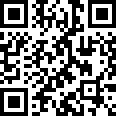Corrugated design needs to be tested in the design of different factors and aspects, designed for different ways, according to the actual industrial methods and principles of control and use, first according to the contents of the characteristics of the transport environment and the choice of materials and the required strength To design 楞 type.
There are several kinds of single corrugated and multi-layer corrugated, each layer has A, B, C, etc. can be selected according to needs (national standards are not described in detail here). Print design. There are many printing methods. The printing methods commonly used in corrugated cartons in China include offset printing, flexographic printing, and gravure printing. Changes in the printing method directly affect other processes, and even printed materials have to be changed.
Decorating design points: There must be signs on the box. GB 191 specifies that the codes and codes stipulated by the commodity inspection authorities should be printed on the cartons, especially the batch number on the cabinets. This is the focus of the meticulous inspection by the commodity inspection authorities and is also a point that many companies can easily overlook. It is necessary to clearly identify the lot number of the cabinet. In short, choose non-polluting materials as much as possible to avoid returns due to packaging problems, especially the packaging of products exported to the EU is particularly noteworthy. The box surface pattern, the text are clear and correct, the depth is consistent, and the position is correct. Some mandatory products now also need to be printed with the "ccc" logo.
The reference standards (International Standards, Commodity Inspection Standards, and National Standards) on the cabinets need to be the latest standards. In order to be responsible to the customer, the manufacturer must also constantly update and enrich the relevant knowledge. For example, coated white paper is selected, and it is difficult to print with aqueous ink flexographic printing. According to the characteristics of offset printing, flexographic printing and gravure printing, and other aspects of the design, the process scheme can be comprehensively considered.
In short, the design of export corrugated cartons includes these aspects, and each aspect is not isolated but inter-related. Only careful consideration in every aspect will not make corrugated boxes a bottleneck for export goods.
The choice of inks, adhesives and varnish (laminates) should take into account the regulations of the destination country. In this regard, environmental protection requirements need to be considered. For example, printing inks can be selected from the internationally popular vegetable oil type inks, which have little harm to the human body.
When designing, pay attention to the update of current standards and use the latest standards. Process Design Considerations The molding process of corrugated cartons has a lot of intermediate links and is also worth noting in our design. The pattern on the box should be determined according to the different cultures of each country. We cannot follow our traditional domestic practice. The pattern is simple and clear, and the single color is the first choice.
People in each country have different preferences and there are many taboos. It is particularly worth noting when designing and decorating. Nowadays, a large part of packaging and printing in many countries in Europe and the United States uses flexographic printing as the main printing method. Flexographic printing uses solvent-free UV inks and water-based inks, which can minimize harm and eliminate environmental pollution.











